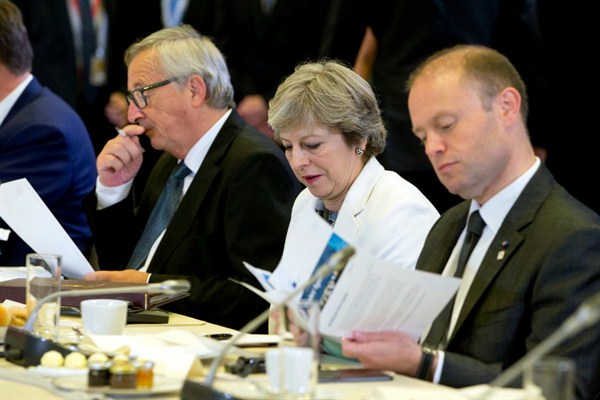Nearly 18 months have passed since Britain voted for Brexit, a decision that was backed by 52 percent of voters in Britain overall and nearly 54 percent in England. Support for leaving the European Union was much deeper among manual workers, around 60 percent of whom backed the referendum, along with an estimated 75 percent of people with no qualifications—people who left school at 16 and then stayed out of the education system.
Since the Brexit vote, Britain’s political landscape has changed considerably. Theresa May has replaced David Cameron, who as prime minister and leader of the Conservative Party was responsible for calling the referendum in order to fulfill a re-election pledge he made in 2013. Cameron’s more socially liberal brand of conservatism attracted significant support from middle-class Britons and university graduates, but it also pushed traditional euroskeptic conservatives into the arms of the hard-right U.K. Independence Party, or UKIP, which had long advocated for Brexit.
May is a different type of conservative. Now responsible for delivering Brexit, she has sought to reconnect her party not only with those traditional Tories who had defected to UKIP, but also working-class voters in the estimated 140 constituencies held by the Labour Party that also voted for Brexit. In her flagship speech on Brexit in January, which was widely seen as a definitive statement on what May really thinks about Brexit, she detailed her plans to leave the single market, much of the customs union and end the free movement of EU nationals into Britain.

